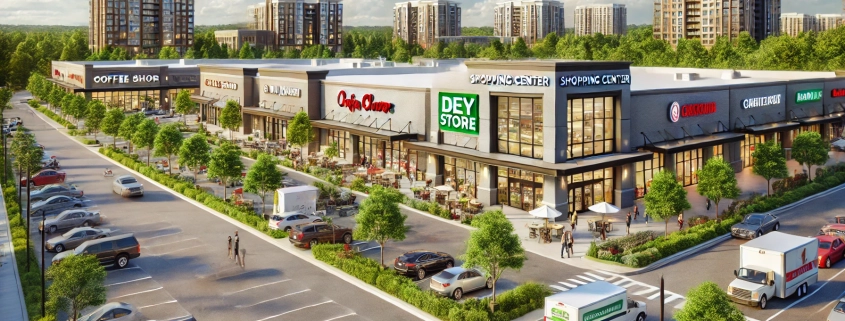Free and Clear Return
The total unlevered (before debt) pre-tax operating cash flow (i.e. Cash Flow from Operations) of a real estate project divided by the total capital invested, generally expressed as a percentage on an annual basis. To clarify, the numerator is typically total unlevered pre-tax operating cash flow (i.e. Cash Flow from Operations) in a given year, while the denominator contains the total amount of capital invested assuming there is no debt. While the Free and Clear Return does not account for taxes and does not take into account the time value of money, it is a useful screening tool used by investors when evaluating potential investments. The Free and Clear Return is the unlevered equivalent of the Cash-on-Cash Return, and thus sometimes referred to as the Unlevered Cash-on-Cash Return.
The Free and Clear Return of an investment is especially important to core investment strategy investors more interested in stable cash flow than in asset appreciation. The Free and Clear Return is typically used alongside other return metrics such as the Equity Multiple and Internal Rate of Return to appropriately assess an investment.
Putting ‘Free and Clear Return’ in Context
Sterling Creek Capital, a real estate investment firm specializing in core acquisitions, is evaluating the purchase of Willow Grove Shopping Center, a well-established 95,000 square foot grocery-anchored retail center located in suburban Atlanta, GA. The center is anchored by a national grocery chain and includes several smaller tenants, such as a coffee shop, a dry cleaner, and a fitness center. Due to the stability of the tenants and long-term lease agreements, this investment aligns with Sterling Creek’s core strategy, which prioritizes stable, low-risk cash flow over speculative property appreciation.
Sterling Creek is considering purchasing Willow Grove Shopping Center for $25 million. The projected total unlevered pre-tax cash flow from the property in the first year is expected to be $1.75 million, generated primarily through rent and reimbursements for property expenses such as Common Area Maintenance (CAM) charges. Since Sterling Creek plans to buy the property without financing (i.e., no debt), they are particularly interested in the Free and Clear Return to gauge the efficiency of the investment’s cash flow relative to the capital deployed.
Free and Clear Return Calculation
To calculate the Free and Clear Return, the firm divides the total unlevered pre-tax operating cash flow (i.e. Cash Flow from Operations) by the total capital invested:
Free and Clear Return = (Total Unlevered Pre-tax Operating Cash Flow / Total Capital Invested) × 100
In this case:
Free and Clear Return = (1,750,000 / 25,000,000) × 100 = 7.0%
Analysis
With a Free and Clear Return of 7.0%, this investment provides Sterling Creek Capital with a clear view of how much pre-tax cash flow is generated by the property in relation to the purchase price, without the influence of debt. This 7.0% return is considered solid for a core investment in a grocery-anchored retail center, especially in a suburban area like Atlanta where tenant demand is stable, and the grocery anchor provides a long-term, dependable source of income.
While the Free and Clear Return doesn’t factor in tax impacts or the time value of money (unlike more comprehensive metrics like the Internal Rate of Return), it gives Sterling Creek an important first-step look at the property’s ability to generate unleveraged cash flow. This type of return metric is particularly useful for a core investor, who prioritizes steady cash flow over riskier, value-add strategies that rely more on appreciation and leverage.
Sterling Creek can then compare this Free and Clear Return alongside other return metrics such as the Equity Multiple and the Internal Rate of Return (IRR) to assess the overall attractiveness of the investment.
Frequently Asked Questions about Free and Clear Return in Commercial Real Estate
What is Free and Clear Return in real estate?
Free and Clear Return is the total unlevered (before debt) pre-tax operating cash flow of a real estate investment divided by the total capital invested, expressed as a percentage on an annual basis. It is used to evaluate the property’s ability to generate cash flow without considering financing.
How is Free and Clear Return calculated?
The formula is:
Free and Clear Return = (Unlevered Pre-tax Operating Cash Flow / Total Capital Invested) × 100
For example, if an investor earns $1.75 million in unlevered cash flow on a $25 million purchase, the Free and Clear Return is 7.0%.
What is the difference between Free and Clear Return and Cash-on-Cash Return?
Free and Clear Return is unlevered—it assumes no debt is used in the investment—while Cash-on-Cash Return is levered and reflects the return on the actual equity invested after debt service. Free and Clear Return is sometimes referred to as the “Unlevered Cash-on-Cash Return.”
Why is Free and Clear Return useful for core investors?
Core investors prioritize low-risk, stable income over appreciation. The Free and Clear Return helps these investors assess a property’s ability to generate consistent income without relying on leverage, making it a valuable screening tool.
Does Free and Clear Return account for taxes or time value of money?
No. Free and Clear Return does not factor in tax implications or the time value of money. It is a simple, static metric used primarily as a first-look screening tool rather than a comprehensive investment analysis.
How was Free and Clear Return applied in the Willow Grove Shopping Center case?
Sterling Creek Capital projected $1.75 million in unlevered pre-tax cash flow from Willow Grove Shopping Center on a $25 million purchase, yielding a 7.0% Free and Clear Return. This helped assess the investment’s cash-generating ability without debt.
Is Free and Clear Return used alone in investment analysis?
No. It is typically used alongside other metrics such as Internal Rate of Return (IRR) and Equity Multiple to provide a complete picture of an investment’s performance and risk-return profile.
Click here to get this CRE Glossary in an eBook (PDF) format.

